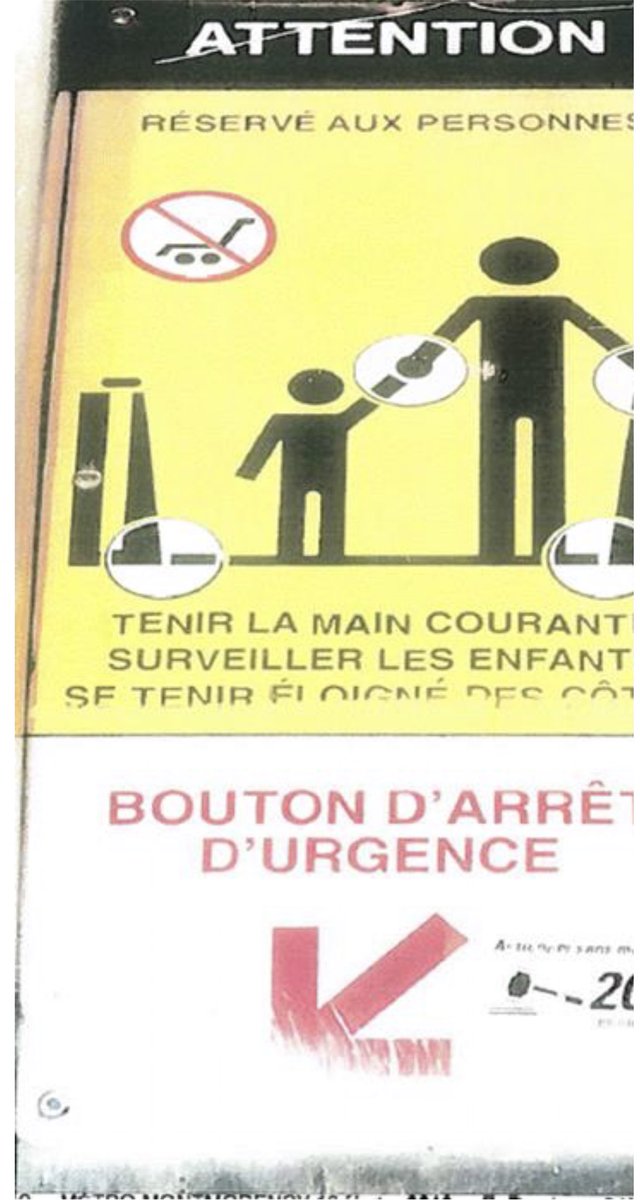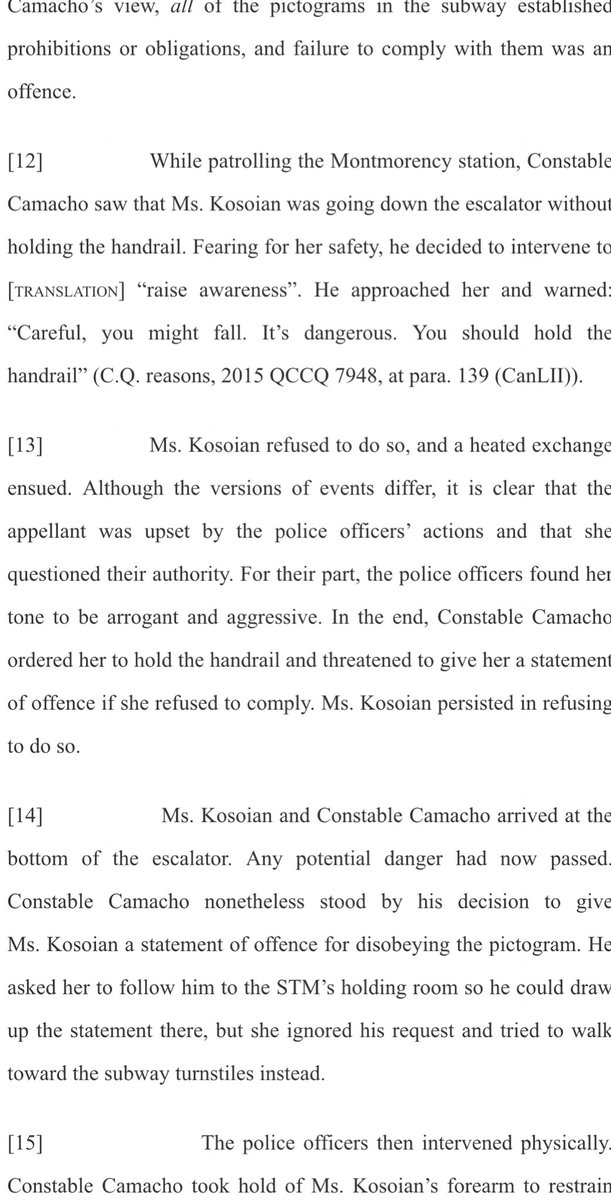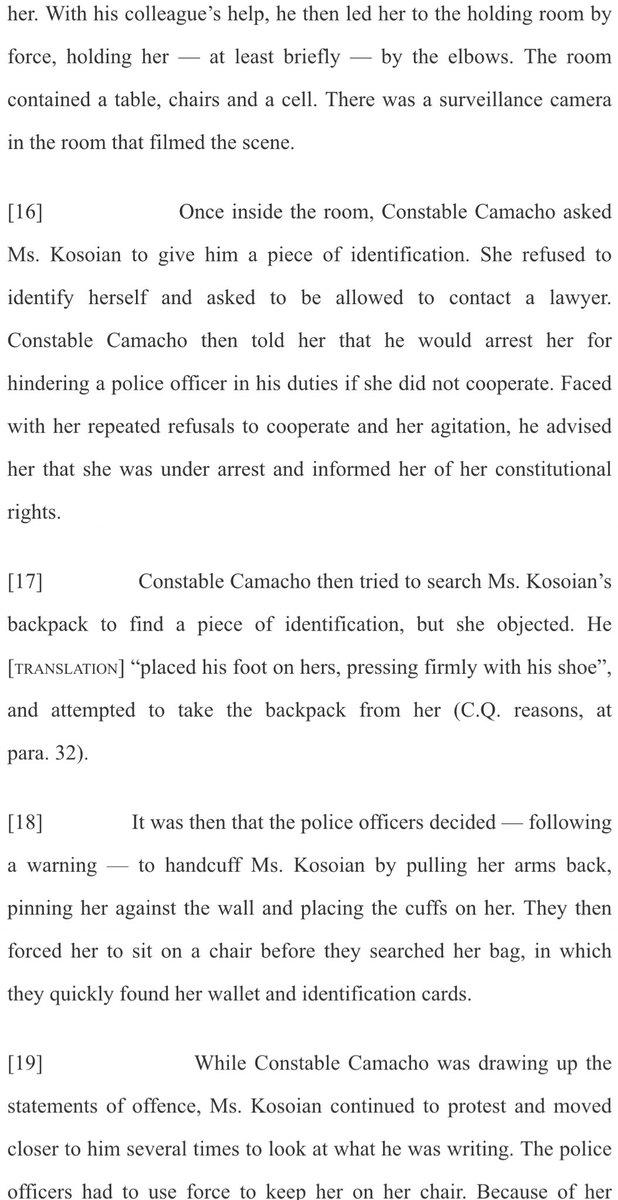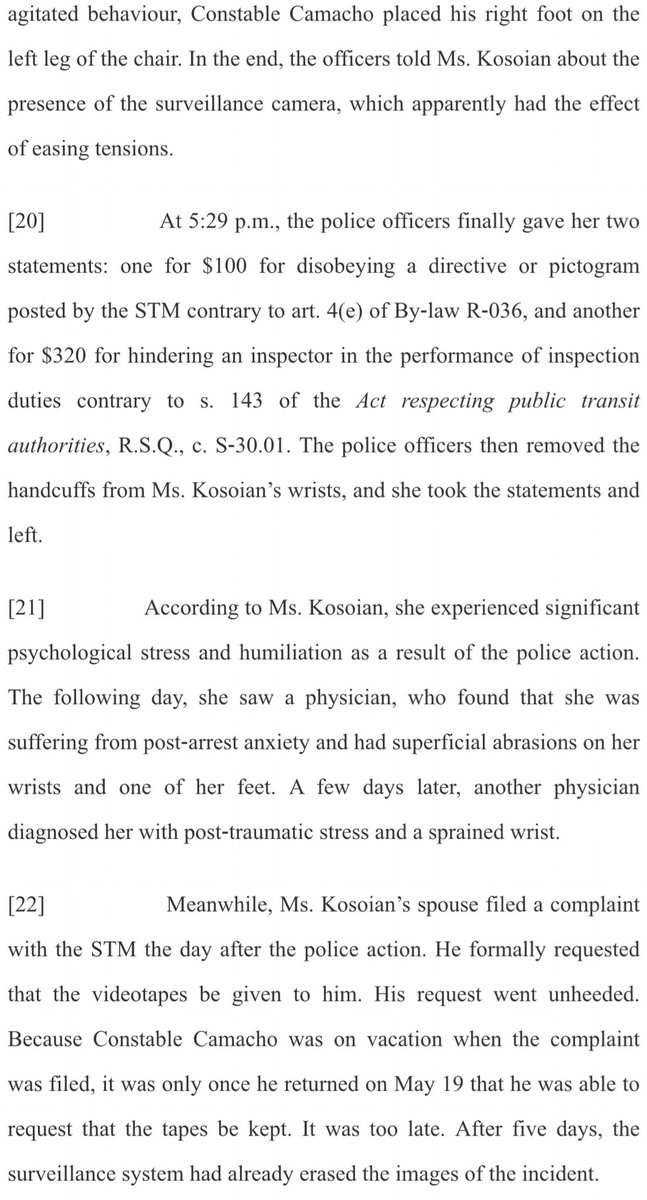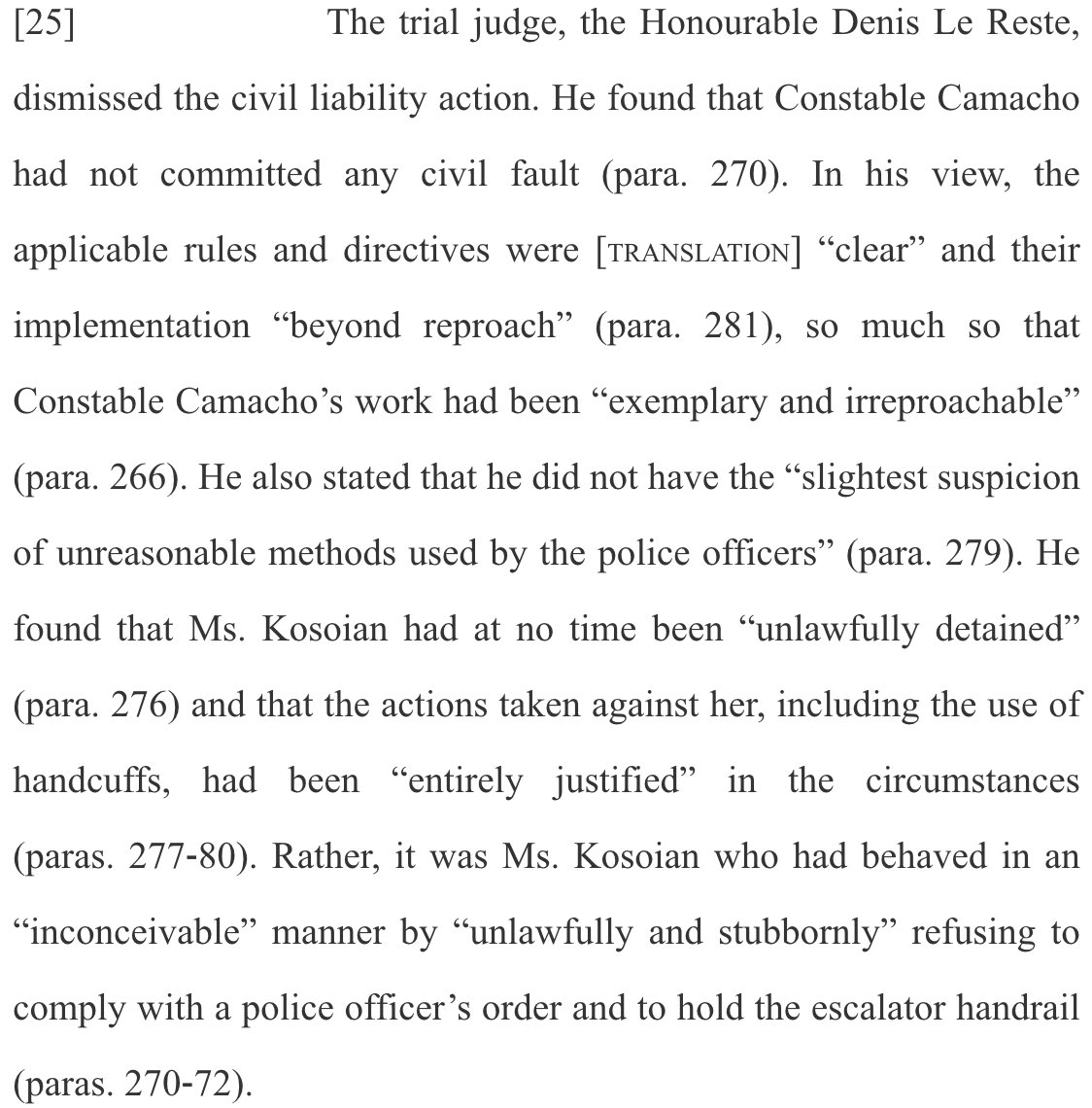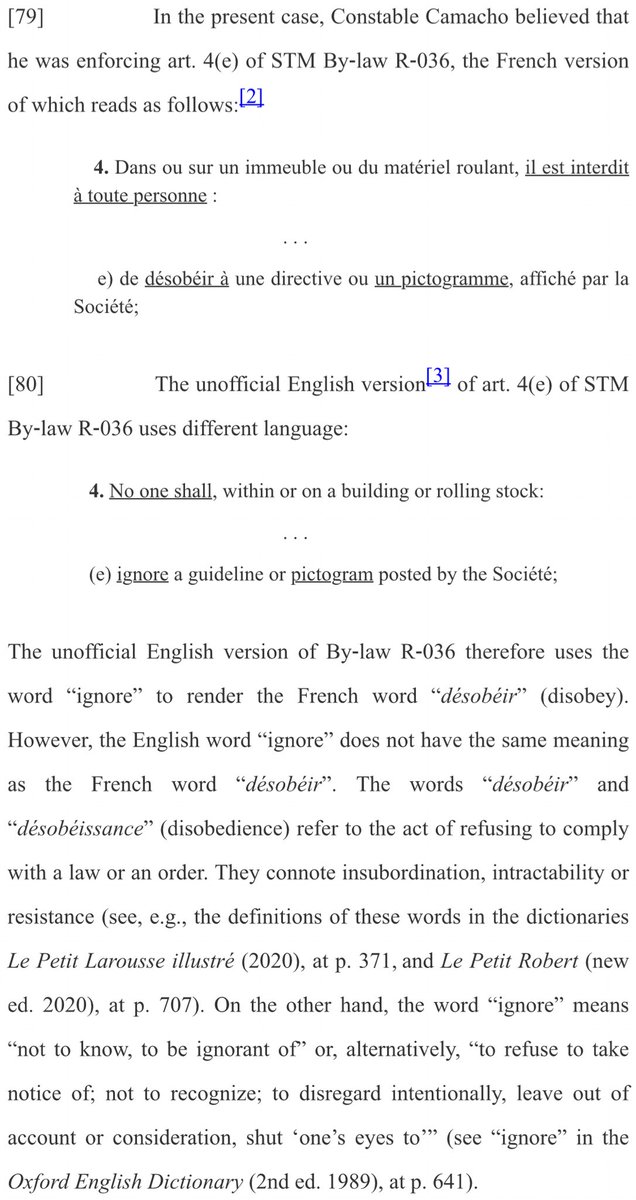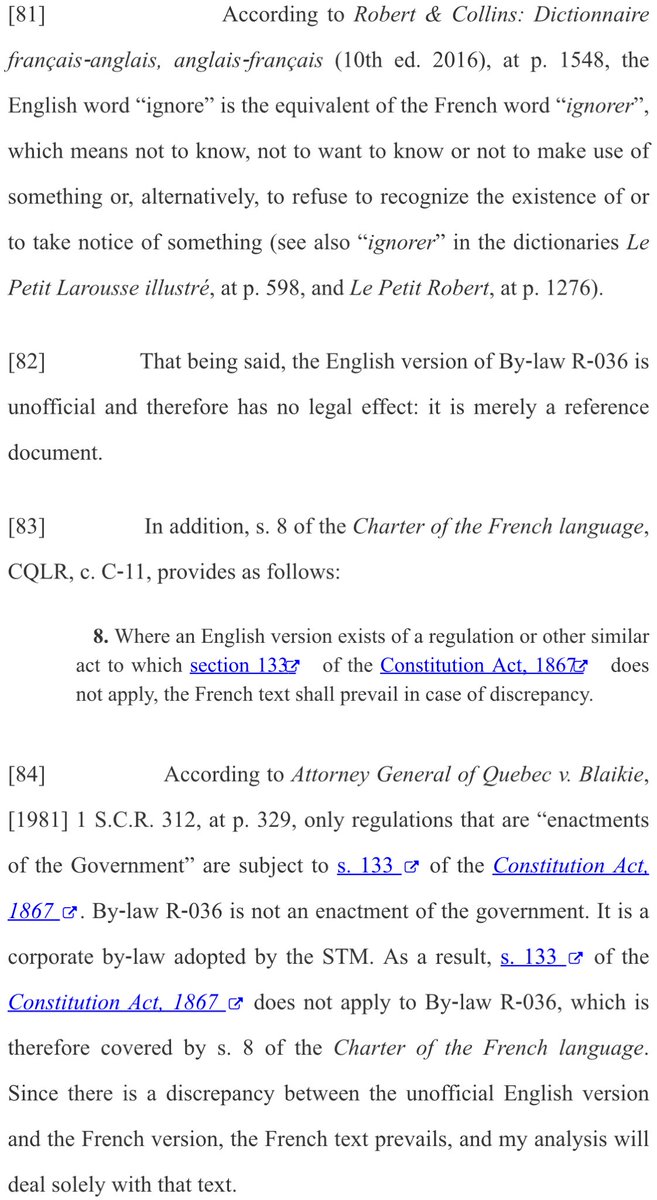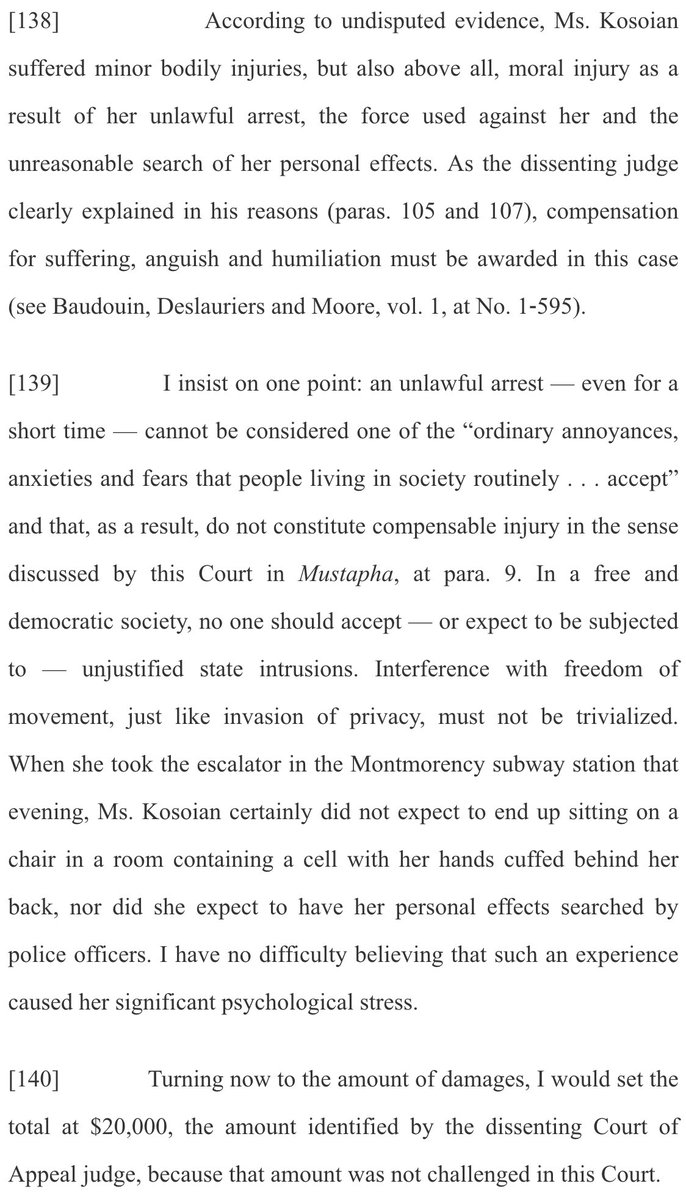@SCC_eng rules that a ‘hold handrail’ sign does not create a criminal offence, that Montreal transport police wrongly arrested the plaintiff for refusing to hold the rail or provide her name, and that the cop and those who trained and employed him are liable for damages. https://twitter.com/scc_eng/status/1200426262784880640">https://twitter.com/scc_eng/s...
Facts here. The plaintiff ended up detained in a room and handcuffed to a chair after refusing to hold the handrail, give her name or accompany the cop to a room.
She was prosecuted and acquitted by the trial judge, who accused the cop of lying. She then sued and lost before a trial judge, who said the cop’s actions were ‘exemplary and irreproachable’. The appeal judges split 2-1, with the majority relying on a ‘presumption of validity’.
SCC: “although an existing offence must be presumed to be valid, an offence is not presumed to exist simply because the state, a legal person established in the public interest or one of their representatives believes that it exists.”
The by-law in question made it an offence to ignore (in English) or disobey (in French) a pictogram. Under a Quebec rule applicable only to regulatory offences, the French version prevails, which is good for the plaintiff because it’s narrower.
“Police officers — like subway users, in fact — have no choice but to examine the elements of the various pictograms posted by the STM to understand what is or is not an offence for the purposes of art. 4(e).”
The pictogram’s validity (based on non-delegation or vagueness) was not at issue. Just its meaning. Crucially, it was in yellow (indicating a warning), not red with a diagonal bar (indicating a command) or a gavel and fine (indicating a rule.)
“in light of Ms. Kosoian’s protests, Constable Camacho could not reasonably be certain that he was acting within his powers. He should have refrained from giving her a statement of offence and then made further inquiries as to the meaning of the pictogram”.
The SCC found that the error meant the cop and his employer were at fault. Without deciding, the SCC also expressed its doubts about the trial judge’s finding that the cop’s later acts were ‘exemplary and irreproachable’.
The SCC also found that the Montreal transport police were liable for themselves misunderstanding the by-law as covering all pictograms and for training police accordingly, but not for the wrong prosecution (as there was no proof of improper purpose.)
“Given the fact that Constable Camacho committed the fault in question in carrying out his mandate and that the STM has not proved that it was impossible for it to prevent the injury, I conclude that the STM is liable also in its capacity as mandator.”
SCC found the cop and police equally to blame and rejected a finding partly blaming the plaintiff. That “would amount to saying that there is a rule of conduct requiring compliance with an unlawful order given by a police officer, even where the order is based on an offence...
... that simply does not exist in law. It is a short step from this to concluding that there must be blind obedience to any demand made by a police officer, no matter how unreasonable, arbitrary or capricious it may appear.@
“a well‑informed person does not commit a civil fault merely by refusing to comply with an order that proves to be unlawful. A person whose rights are infringed must be able to respond — within reason, of course — without being held civilly liable.”
“I also cannot fault Ms. Kosoian for not doing anything to mitigate the injury she suffered. To do so, she would have had no choice but to obey an unlawful order. This is not what is required of a reasonable, prudent and diligent person.”

 Read on Twitter
Read on Twitter